Are you tired of hearing that email is dead? Well, we’ve got news for you: email marketing is still alive and kicking! In fact, it’s still one of the most effective ways to reach your target audience and boost your bottom line.
But don’t just take our word for it. We’ve compiled email marketing statistics that will blow your mind and make you fall in love with email all over again.
- What Is Email Marketing?
- Why Use Email Marketing?
- Importance of Email Marketing
- Email Marketing Statistics You Should Know
- 1. Growth in the Number of Email Users
- 2. Average Open Rate
- 3. Personalized Subject Lines
- 4. Average Click-Through Rate
- 5. Most People View Emails on Mobile Devices
- 6. The Average Unsubscribe Rate
- 7. Use of Automation in Emails
- 8. Average ROI of Email Marketing
- 9. Using Videos in Emails
- 10. Social Proofs in Emails
- 11. Segmented Emails
- 12. Sales Emails Response Rate
- 13. Countdown Timers in Emails
- 14. Average Click to Open Rate of B2B Campaigns
- 15. Email Newsletters
- 16. Email Display on Mobile Devices
- 17. Birthday Emails
- 18. The Best Day for Sending Emails
- 19. Welcome Emails Revenue Generation
- 20. The Best Time for Email Engagement
- 21. Abandoned Cart Emails
- 22. CTAs Increase Clicks
- 23. Automated Emails
From open rates to conversion rates, these email marketing statistics will show you why email marketing is a force to be reckoned with. But before revealing the statistics, let’s introduce the basics of email marketing!
What Is Email Marketing?
Email marketing is a powerful digital marketing strategy that involves sending messages to a group of people via email. It’s all about building relationships with your audience and promoting your products or services through email campaigns.
In email marketing, you can target specific audiences based on their interests, behavior, and demographics. This means that you can send personalized messages to the right people at the right time, which can lead to higher engagement, conversions, and sales. Email marketing allows you to keep your audience informed about your brand, nurture leads, and ultimately drive more revenue.
Read also: Email Outreach Tracking Tips
Why Use Email Marketing?
Email marketing is neither overrated nor is it going away anytime soon. In fact, it’s still one of the most effective marketing channels out there. While some people may argue that email is outdated, the statistics prove otherwise.
Email marketing has a higher ROI than any other marketing channel, and it’s a great way to reach your target audience directly. This outreach channel allows you to personalize your messages and create a unique experience for your subscribers.
What’s more, email marketing is cost-effective and measurable, which means you can easily track your results and make data-driven decisions. So, if you’re not already using email marketing, it’s time to start!
Read also: Key Business Growth Metrics to Measure
Importance of Email Marketing
Email marketing is important because it is a cost-effective way to reach a large audience quickly. Businesses can send personalized messages directly to their subscribers’ inboxes, increasing the likelihood that those subscribers will engage with the content.
Email marketing can also help you build relationships with your customers by providing them with valuable information, promotions, and updates.
Additionally, email marketing provides you with valuable data on open rates, click-through rates, and other metrics, allowing you to refine your email marketing strategies over time. Ultimately, email marketing can help you increase brand awareness, drive sales, and grow your customer base.
Read also: Best Email Drip Campaign Examples
Email Marketing Statistics You Should Know
Now that you’re aware of the basics of email marketing, let’s introduce our list of the top email marketing stats you must know.
1. Growth in the Number of Email Users
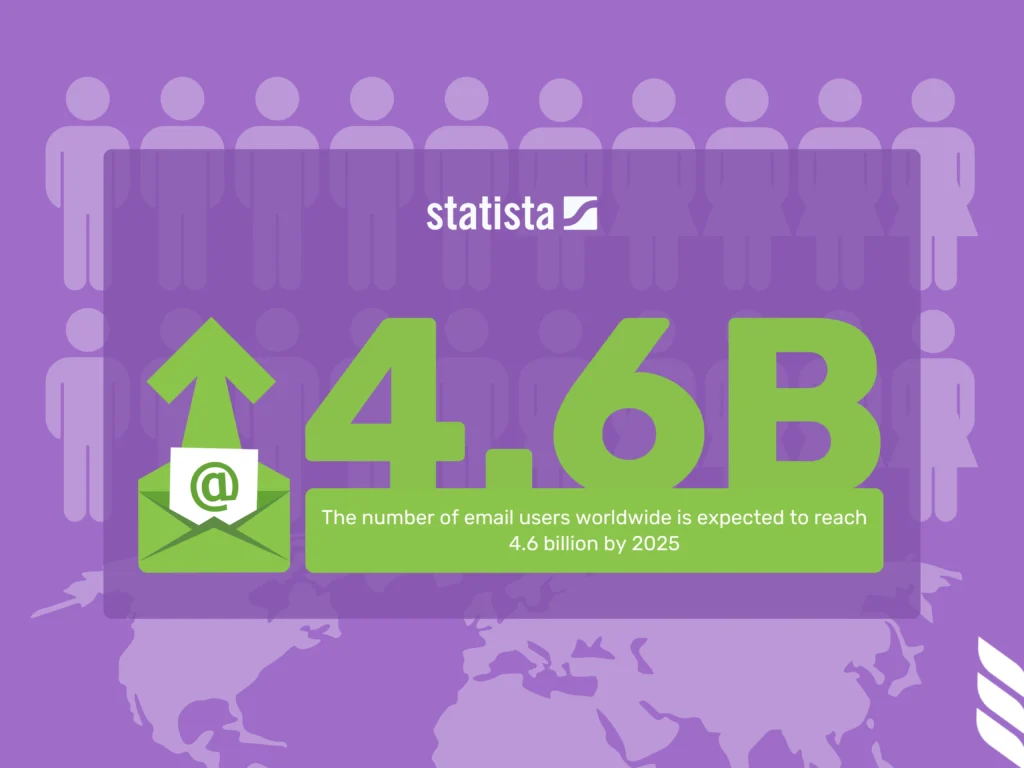
The number of email users worldwide is expected to reach 4.6 billion by 2025. This growth in email usage emphasizes the importance of email as a marketing channel. (Source: Statista).
Email usage continues to grow worldwide, making it a valuable channel for businesses to reach their audience. As the number of email users increases, businesses should consider incorporating email into their overall marketing strategy to reach and engage their target audience.
2. Average Open Rate
Open rates are a key metric for determining the success of a marketing campaign. The average open rate for emails is around 21.33%. This number highlights the need for marketers to create engaging and relevant content to increase open rates. (Source: MailChimp)
3. Personalized Subject Lines
Personalized subject lines can increase open rates by 50% compared to generic subject lines. (Source: Zippia).
This highlights the importance of using personalization tactics, such as using the recipient’s name, to improve email engagement. It also makes emails more appealing and increases the likelihood that they will be opened.
4. Average Click-Through Rate
The click-through rate (CTR) measures the effectiveness of an email in driving recipients to take action. The average click-through rate (CTR) for emails is around 2.3% (Source: Campaign Monitor).
Improving CTR requires a strong call-to-action (CTA) and relevant content that will encourage subscribers to click. B2B emails tend to have a slightly higher CTR, suggesting that B2B marketers may be more successful at driving engagement and action from their audience.
5. Most People View Emails on Mobile Devices
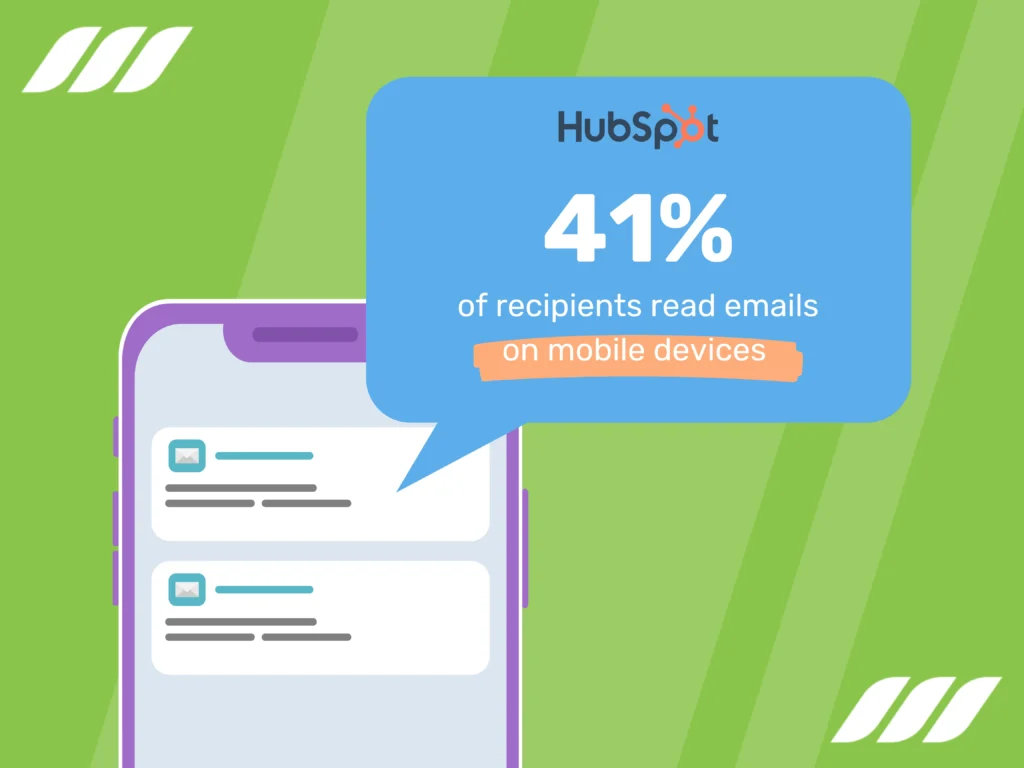
Most recipients read emails on mobile devices (41%). (Source: HubSpot Blog Research). This highlights the need for marketers to create mobile-friendly email designs that are optimized for all devices.
Responsive email design, which adjusts to the size of the screen, can improve the readability and effectiveness of emails on any device.
6. The Average Unsubscribe Rate
The unsubscribe rate is a measure of how many subscribers are choosing to opt out of an email list. The average unsubscribe rate for emails is around 0.26%. (Source: MailChimp).
A high unsubscribe rate indicates that the content and frequency of emails are not meeting subscribers’ expectations. As such, you must know your content and frequency of emails. Plus, you must regularly evaluate your email strategy to ensure you are keeping your audience engaged.
7. Use of Automation in Emails
About 87% of B2C marketers use the best email marketing automation tools to create campaigns. (Source: HubSpot). Email automation can greatly improve the success of an email marketing campaign.
Email marketing automation can help you create more targeted and personalized messages, increasing the likelihood that subscribers will take action. This results in higher conversion rates and a more effective email marketing strategy.
8. Average ROI of Email Marketing
The average ROI of email marketing is up to $45 per $1 spent. (Source: Statista)
The ROI can vary greatly depending on the industry and target audience. You can improve the revenue generated from email marketing by segmenting your email list and sending targeted, personalized messages.
9. Using Videos in Emails
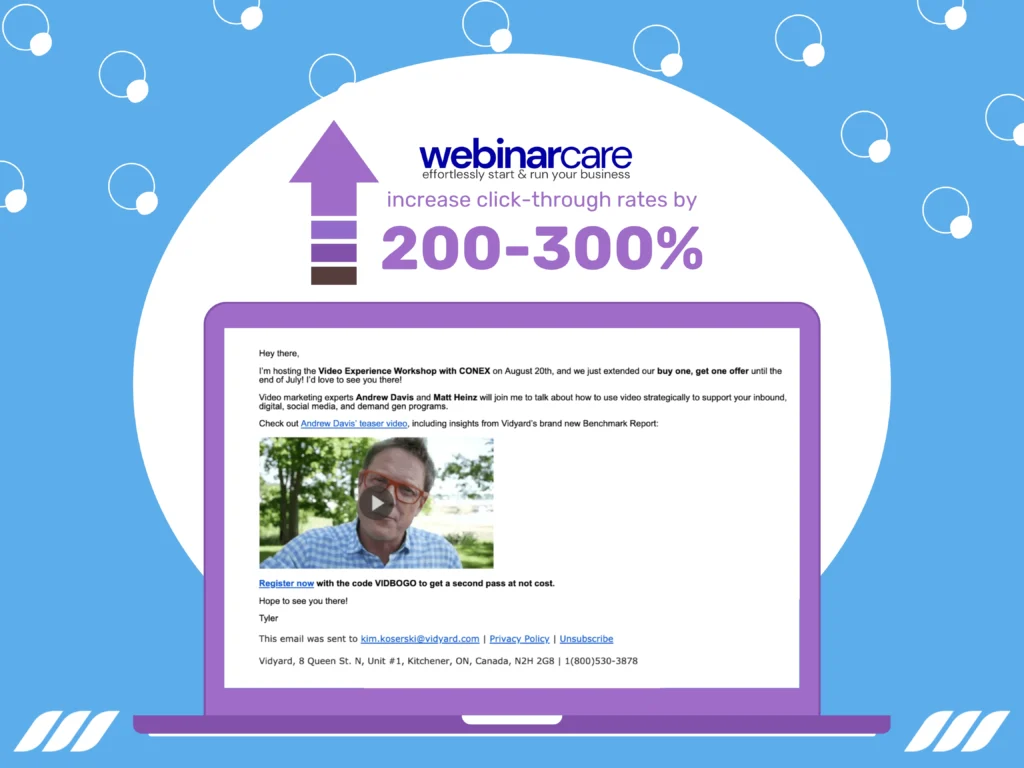
Videos are a powerful tool for engaging and entertaining subscribers, making them more likely to take action. Using videos in emails can increase click-through rates by 200-300%.
Videos in emails can have a significant impact on engagement and action. It is a powerful visual medium for entertaining and engaging subscribers, making them more likely to click through to the desired action.
10. Social Proofs in Emails
Incorporating social proofs, such as customer reviews and testimonials, in emails can boost conversion rates by 15%. (Source: OptinMonster)
Social proof can increase trust and credibility in an email, making subscribers more likely to take action. This can result in a significant increase in conversion rates and a more effective email marketing strategy.
11. Segmented Emails
Segmenting your email list can increase open rates by 14.31%. Plus, it can raise click-through rates by 100.95% as compared to non-segmented emails. (Source: MailChimp via Inc.)
Segmenting the email list allows businesses to send targeted, personalized messages that are relevant and valuable to each subscriber. By dividing the email list into smaller groups based on subscriber characteristics, you can send more targeted, personalized messages that are more likely to be opened and acted upon.
12. Sales Emails Response Rate
Sales emails that are between 200-250 words in length tend to receive the highest response rate of 19%. Source: Reply.io)
This suggests that being concise and to the point is key to engaging potential customers and eliciting a positive response. Plus, ensure your subject line is compelling, and the content offers value to the recipient.
13. Countdown Timers in Emails
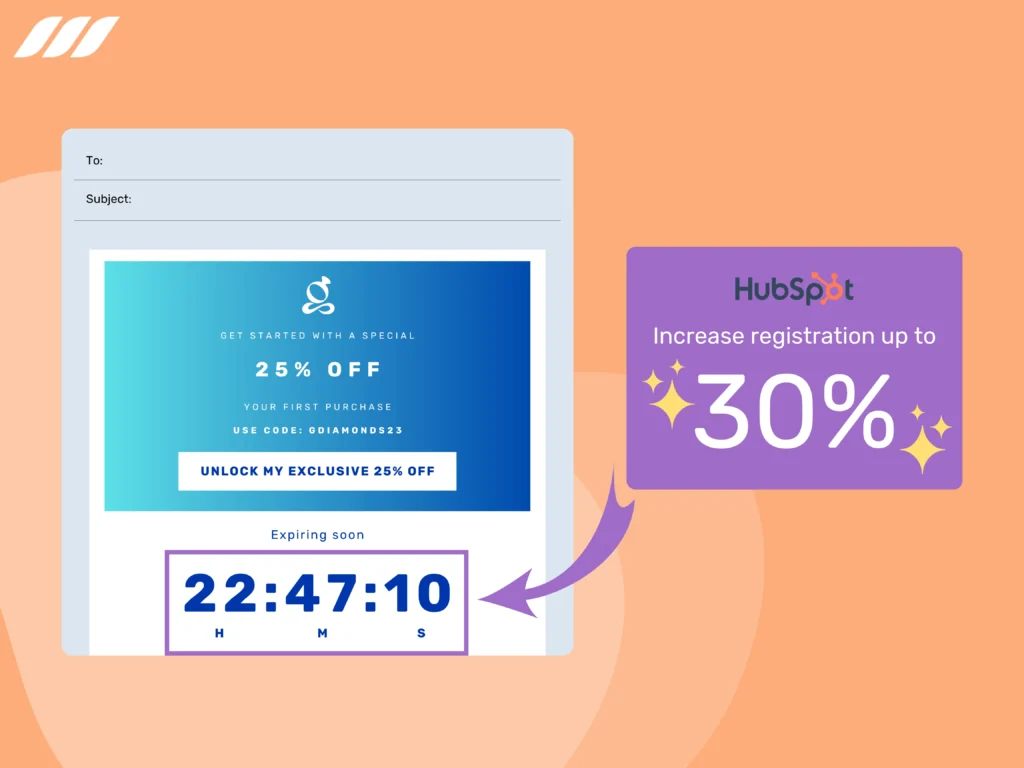
Countdown timers in emails can have a significant impact on increasing registrations, with a reported boost of up to 30%. (Source: HubSpot)
Countdown timers are a useful tool that can be employed to create a sense of urgency and encourage potential registrants to take action quickly. By setting a deadline for registration and displaying a ticking clock in the email, recipients are reminded that time is running out and they need to act fast.
In addition, countdown timers can create a sense of excitement and anticipation. When recipients see the timer ticking down, they may feel a sense of exigency, leading to a positive feeling about the event or offer being promoted in the email.
14. Average Click to Open Rate of B2B Campaigns
Business-to-business (B2B) email campaigns tend to have a higher average click-to-open rate than business-to-consumer (B2C) campaigns, with a reported difference of 2%. (Source: Emfluence)
B2B campaigns often target a specific niche audience with a clear interest in the product or service being offered. This means that the content of the email is more likely to resonate with the recipient, leading to a higher engagement rate.
Also, B2B email campaigns tend to focus on building long-term relationships with customers rather than just making a one-time sale. As a result, B2B email campaigns may be perceived as more valuable and trustworthy by the recipient, leading to a higher click-to-open rate.
15. Email Newsletters
Email newsletters are the most commonly used form of content marketing among marketers, with 81% of them reporting its use in their marketing campaigns.
Email newsletters provide an effective way to stay in touch with subscribers and keep them engaged with a brand. By providing valuable and relevant content, businesses can build trust and credibility with their audience, increasing customer loyalty and retention.
16. Email Display on Mobile Devices
As many as 80% of recipients will delete an email if it isn’t optimized for mobile viewing. (Source: Clever Tap)
With the rise of mobile devices and the increasing amount of time people spend on their smartphones, it’s more important than ever for businesses to ensure that their emails are optimized for mobile viewing.
17. Birthday Emails
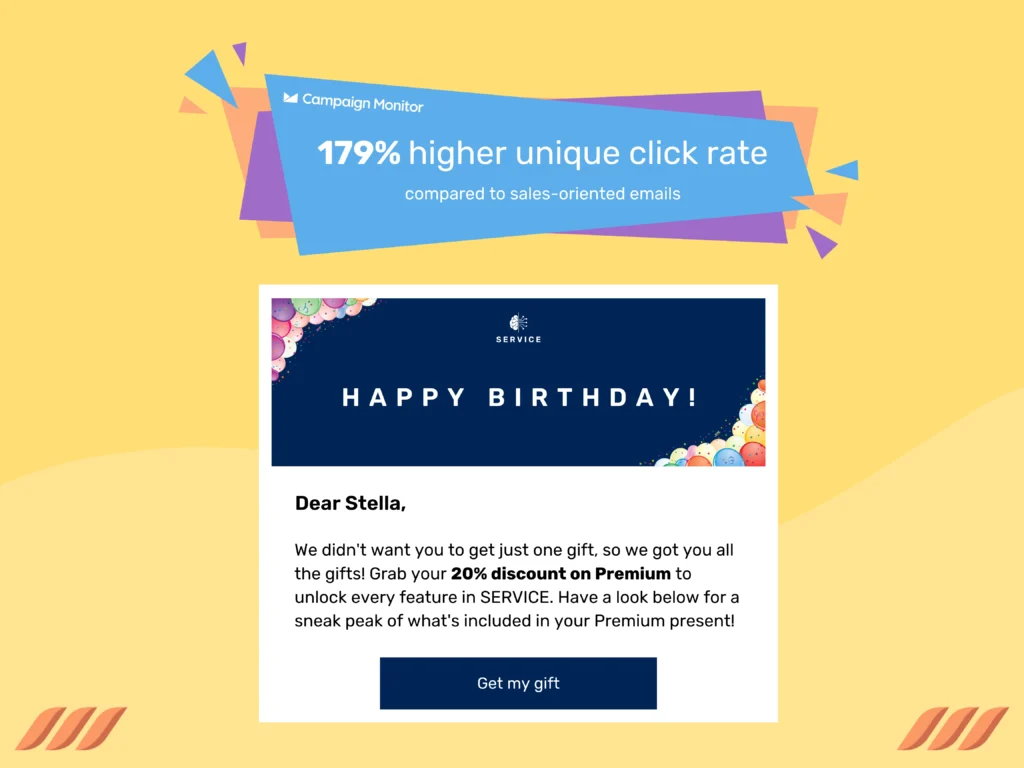
Sending birthday emails can have a significant impact on customer engagement. Birthday emails result in a 179% higher unique click rate compared to sales-oriented emails. (Source: Campaign Monitor)
18. The Best Day for Sending Emails
Friday appears to be the most effective day for sending emails, with the highest rates of opens and clicks recorded on that day. (Source: Campaign Monitor)
19. Welcome Emails Revenue Generation
Welcome emails can help bring about a significantly higher revenue per email as compared to promotional campaigns. In fact, they can boost your revenue by 320% per email more than their commercial counterparts. (Source: Invesp)
20. The Best Time for Email Engagement
According to research, after-work hours appear to be the most effective time for email engagement, with 45% of recipients most likely to click through a marketing email during this time. (Source: Dynamic Yield)
21. Abandoned Cart Emails
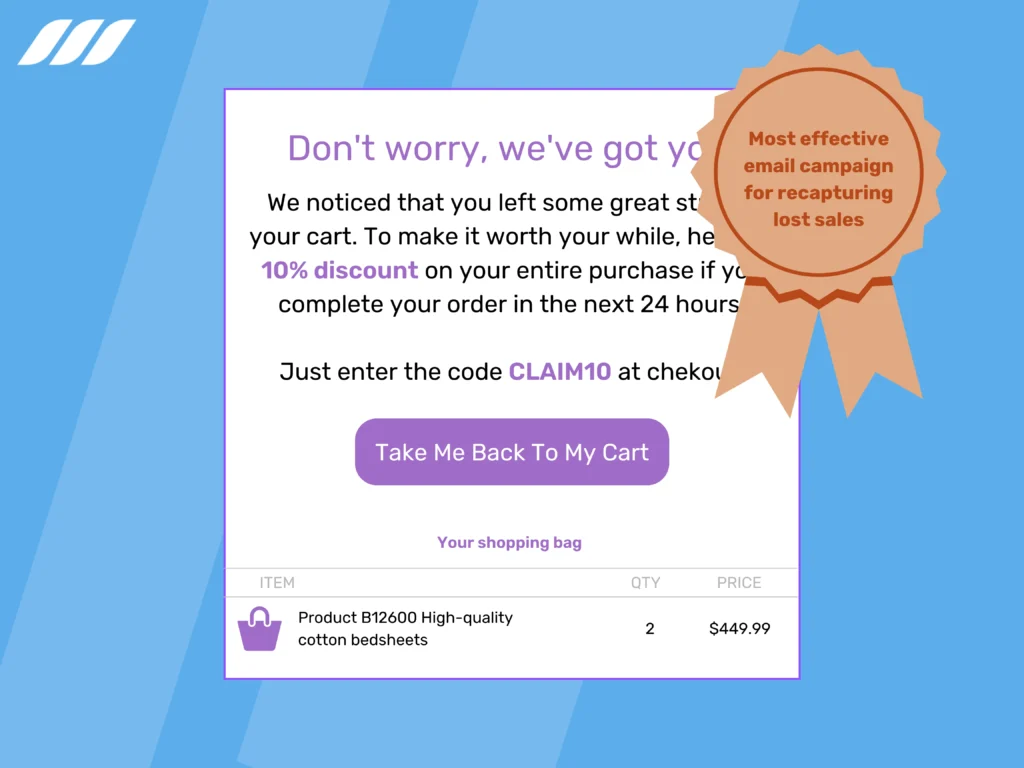
Abandoned cart emails have a conversion rate of 18.54%, making them one of the most effective email campaigns for recapturing lost sales. (Source: Brilliance)
22. CTAs Increase Clicks
The number of CTAs included in an email can have a significant impact on the email’s click-through rate (CTR), with one CTA increasing clicks by an impressive 371%. Source: CampaignMonitor)
23. Automated Emails
Automated emails can be extremely effective at driving revenue, with automated campaigns responsible for generating a staggering 320% more revenue than other types of emails. (Source: Campaign Monitor)
Conclusion
These email marketing statistics highlight the importance of delivering relevant and valuable content to subscribers and the role that personalization, segmentation, images, videos, and subject lines can play in driving higher response rates and better results from email marketing.
Businesses that focus on these key elements can improve the relevance and value of their emails, driving greater engagement and ultimately leading to better results from their email marketing campaigns.

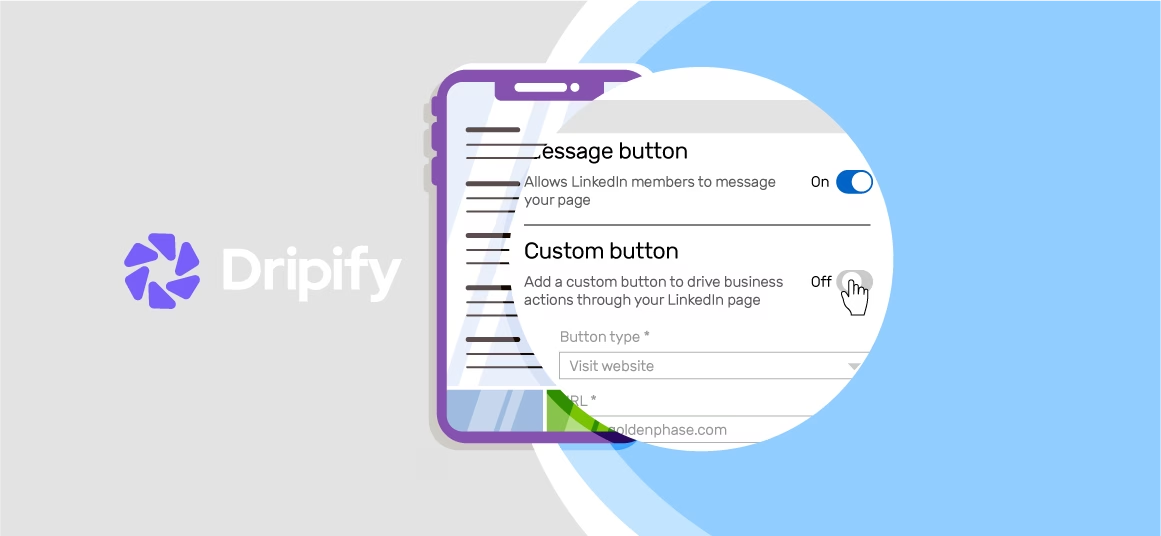
![Email Outreach Tracking [Tips, Tricks and Tools]](https://dripify.io/wp-content/uploads/2025/02/11-7-png.avif)
![Create a Prospecting Plan [+8 Prospecting Methods]](https://dripify.io/wp-content/uploads/2025/02/11-png.avif)